Arm wrestling is a sport with a long and rich history. It is a test of strength, skill, and endurance and has been enjoyed by people all over the world for centuries.
It is a reasonably common sport now among youngsters. I am sure you know the rules of this game. It is a simple sport that requires two opponents and a hard surface. But what people don’t know are the muscles that are worked while wrestling the arm.
The rotator shoulder muscles, biceps, deltoids, pectorals, and other muscles are worked during arm wrestling.
We will discuss more about the muscles worked and the training required in arm wrestling. Let’s get rolling!
What Are The Muscles Used In Arm Wrestling?
When two people face each other across an arm wrestling table, they may look like they’re using nothing but brute force to win. However, the muscles used in arm wrestling are pretty complex.
The primary muscles are the biceps and triceps, which work together to extend and flex the elbow. However, the forearm and wrist muscles are also crucial in providing stability and generating torque.
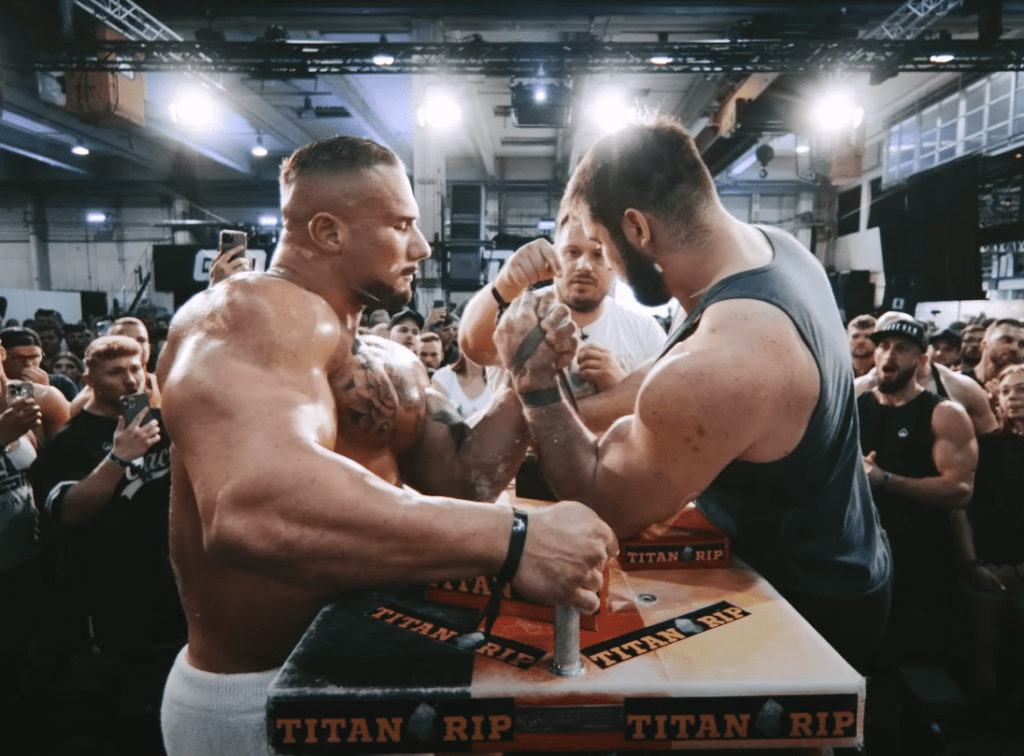
In addition, the shoulder and back muscles help to provide support and power. As a result, winning an arm wrestling match does not require only strength but also coordination and skill.
Additionally, one should have a solid bone to bear the pressure put on by the muscles; otherwise, it can cause fractures of bones.
In arm wrestling, the muscles you use will depend upon the technique and the range of rotation you are at. The muscles you will use at the starting position will be different from those you will use by the end of the match.
In this article, we will use many biological words, so to make your life easy, let’s break it down into different joints and the actions we are mainly looking at.
Shoulder complex (internal rotation)
- Subscapularis
- Pectoral
- Latissimus Dorsi (also responsible for adduction)
Elbow (flexion)
- Biceps
Wrist (Flexion)
- Wrist flexor muscles
Trunk (Tilt)
- Oblique
The muscle attached to the shoulder is responsible for rotating your opponent’s arm closer to the table. The biceps are used to pull your opponent’s forearm closer to you.
The wrist flexors will help break the wrist, and the oblique helps with the finishing touch at the very bottom, where you lean to the side to hit your opponent’s wrist on the table.
Different Arm Wrestling Moves
Here are the most common arm wrestling moves:
1. Hook
The most common type of move that any novice arm wrestler would know is “Hook” or “Hooking.”
The significant meaning of hooking is the supination of the hand and forearm, which leads to a match based on the pressure applied through the wrist.
Usually, any successful hooking would be based on raw arm strength rather than hand control techniques. This move is also categorized as the “inside” style of arm wrestling.
2. Top roll
Top Roll or Top Rolling is categorized as the “Outside” Style of Arm Wrestling.
Pronation of the hand and forearm, which makes the thumb the point of pressure as you rotate into the opponent’s hand, is the distinguishing feature of a top roll.
More so than a hook or press, a successful top roll typically depends heavily on technique and hand and forearm strength.
3. Press
The third primary technique or style of arm wrestling is frequently referred to as the “triceps press,” “shoulder pressing,” or “shoulder rolling.”
Rotating the competitor’s body to place their shoulder behind their hand distinguishes a press from other lifts.
This stance, which is typically only attempted in neutral or advantageous positions to finish an opponent, enables the athlete to more effectively utilize their body weight and triceps power.
A hook or top roll can be used to access a press.
You may also like to read:
Type Of Training Required For Arm Wrestling
Resistance bands, thick grip curl bars, and rolling handles are some of the best equipment for beginning arm wrestling training.
With these tools, you may work on strengthening your wrists and forearms while the resistance bands give you time under tension.
1. Wrist Curls
If you are someone who wants to develop wrist and forearm strength, you can start by performing a variety of wrist curls. This is considered the number one exercise for even advanced arm wrestlers.
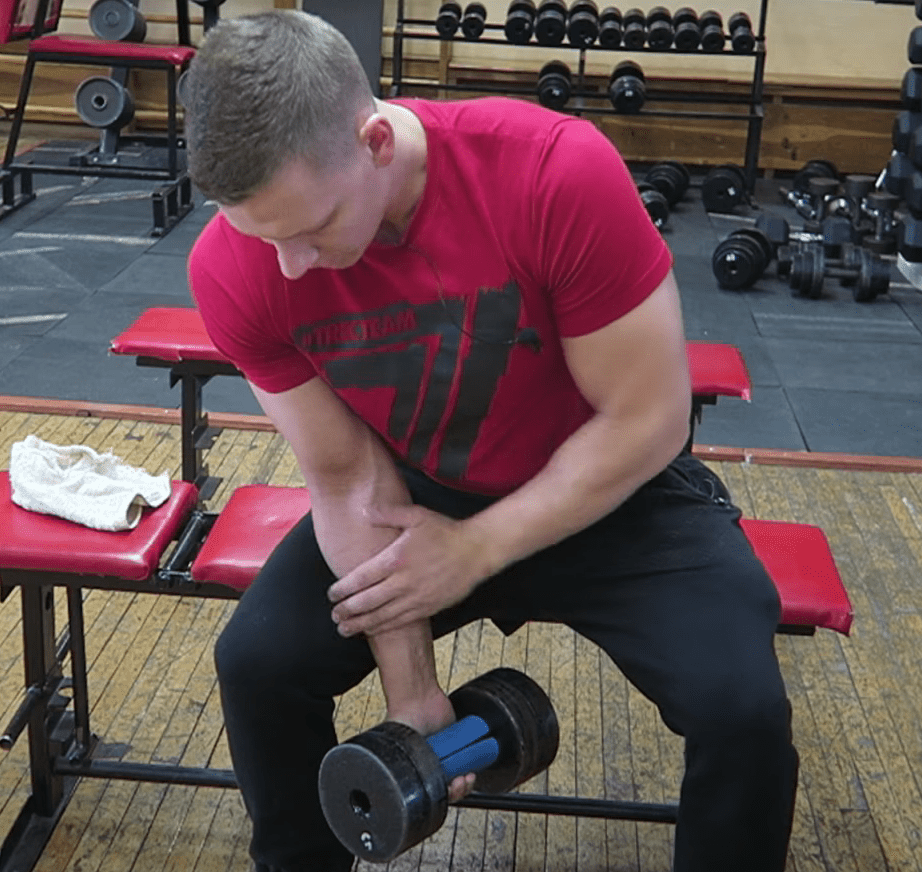
One of the best variations to start with is banded Wrist curls. You might start with a lower resistance band to get the blood pumping.
The consistent band pressure allows for a more extended period of time under tension, which will significantly aid in the development of a solid support grip and a solid base of wrist strength for you to grow on.
When performing these, concentrate more on the wrist and squeeze the forearm; you should feel a great stretch and ongoing burn.
Easy steps to perform Wrist Curls –
- Put it up or hook it to the ground.
- Thumb up as you clasp the band in your hands.
- Curl your wrist gradually upward while holding it loosely.
- Set the wrist down once more.
- Slowly curl back up to the top.
2. Wrist Flexion
Wrist flexion is a process of flexing your wrist so that the palm of your hand faces inward toward your arm.
It involves bending your wrist inward, so if you’re flexible enough, your fingers might be able to touch the inside of your wrist.
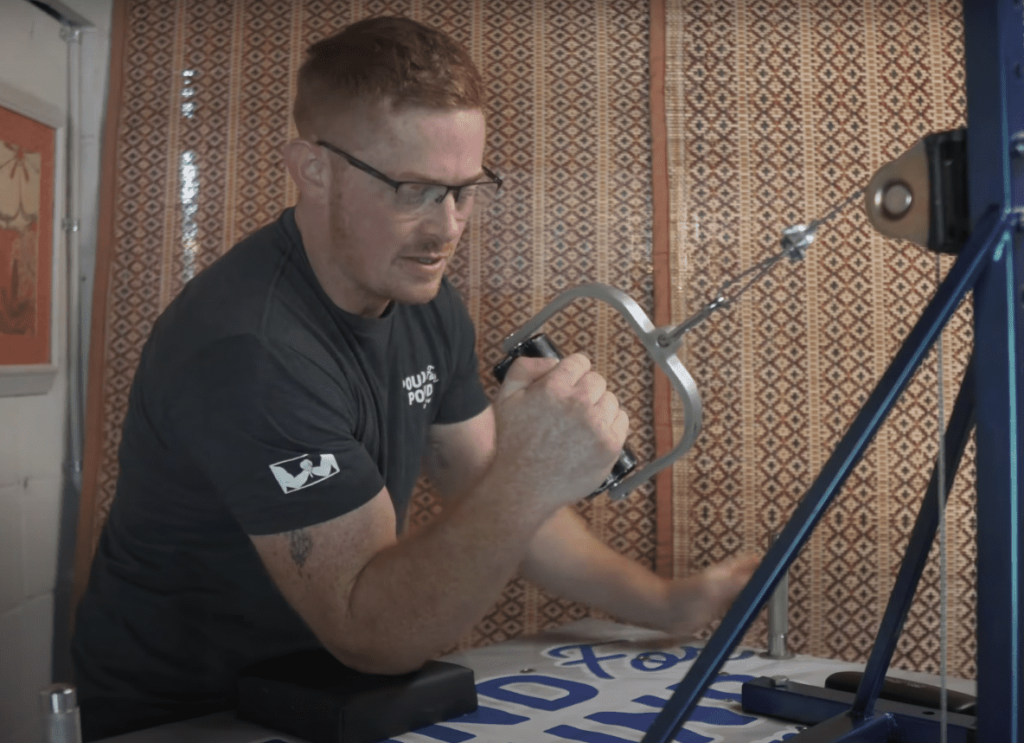
Steps to perform Wrist Flexion –
- Put your palm up and extend your arm in front
- While pointing your hand at the ground, bend your wrist.
- Gently extend your wrist with your other hand until you feel light to moderate stretch in your forearm.
- Hold for between 15 and 30 seconds, minimum. Do this 2 to 4 times.
3. Bicep Curls
Bicep Curls can be done by holding a dumbbell or barbell in each hand, palms face up, curling both hands upward, keeping the upper arms close to the ribcage, and pulling the forearms up, hinged at the elbows.
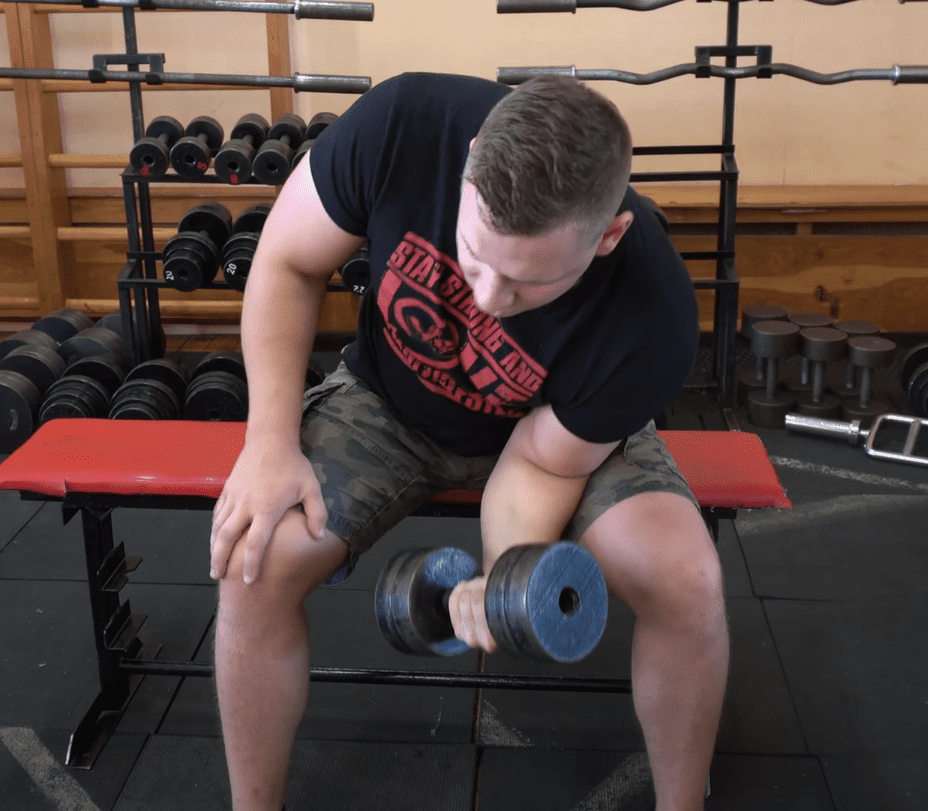
Simple and easy steps to perform Bicep Curls
- Dumbbells in each hand should be held while standing. The ideal position for your arms is with your elbows at your sides and forearms in front of you.
- Bend your elbows and raise the dumbbells to your shoulders.
- Slowly reverse the curl, then do it again.
To exercise your pectorals, which are located in your chest region, you can do some exercises like Barbell Bench Press.
4. Barbell Bench Press
The barbell bench press is a compound exercise that targets your chest muscles. It also works your shoulders and triceps. The bench press is a staple in many strength-training programs.
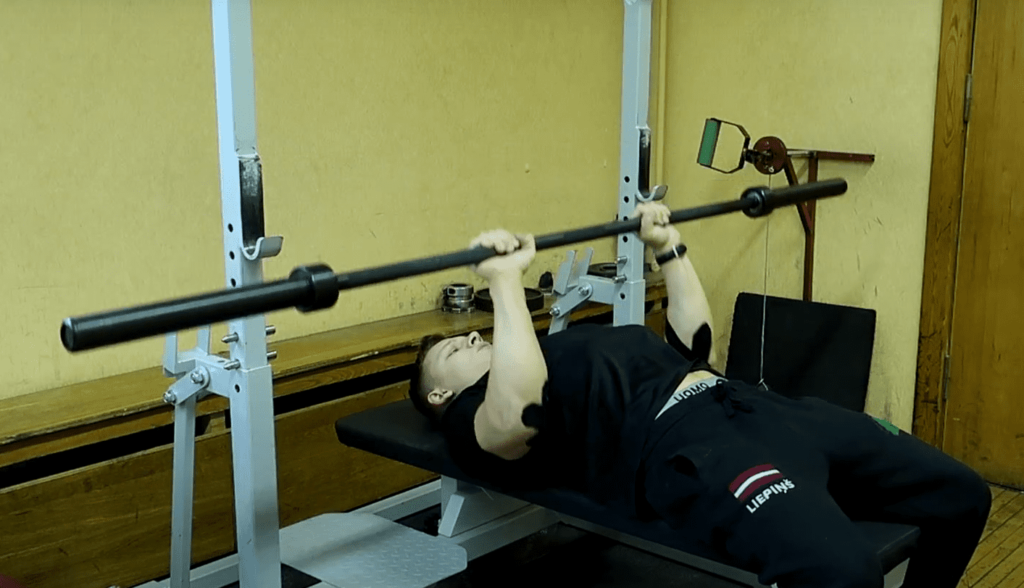
Simple steps to do Barbell Bench Press –
- You should place your hands on the barbell while lying flat on a bench with your feet on the floor.
- The elbows should be at a 90-degree angle, and the forearms should be parallel to the floor.
- Grasping the bar, push it upward after lowering it to contact the chest.
- Then do it again.
To work on your shoulders, you can do diagonal raises, which will help strengthen the entire shoulder region and help improve shoulder stability.
5. Diagonal Raises
A diagonal raise is an effective way to target your back and shoulder muscles.
Simple steps to perform Diagonal Raises –
- Start by holding a dumbbell in your left hand in front of your right leg while standing with your feet hip distance apart.
- When the weight is held at the height of your shoulder, extend it outward to the left side.
- After eight to fifteen repetitions, lower the weight and perform the exercise on the opposite side.
Benefits of Arm Wrestling
Though it may seem simple, arm wrestling can benefit those who participate.
For one, it is an excellent way to build arm and shoulder strength. The repetitive motion of locking and unlocking elbows helps increase muscle endurance, while an opponent’s resistance helps build raw power.
In addition, arm wrestling can be a great way to relieve stress.
The focus and concentration required to win a match can help to clear the mind and provide a brief respite from the demands of daily life.
And finally, arm wrestling is simply fun. It’s a chance to test one’s strength in a friendly competition, and the feeling of victory is hard to beat.
So, whether you want to boost your fitness level or have fun, try arm wrestling.
Here are some of the other benefits of arm wrestling:
1. Arm wrestling can help to improve your grip strength. This is beneficial for activities such as opening jars or carrying heavy objects.
2. The sport can also help to improve your cardiovascular health. Arm wrestling is an aerobic activity that strengthens your heart and increases oxygen intake.
3. Furthermore, arm wrestling can help to increase muscular endurance. This means that you can maintain your strength for more extended periods.
4. Finally, arm wrestling is a great way to relieve stress. Physical activity can help to release endorphins, which have mood-boosting effects.
Also, read:
- What Are The Results For 30 Minutes A Day On Stationary Bike?
- What Are The Benefits Of Walking Barefoot On A Treadmill?
Conclusion
Arm wrestling is a great way to build muscle and increase strength. Not only do you need to have strong arms, but you also need powerful shoulders and a sturdy core.
In this article, we’ve discussed the muscles used in arm wrestling, the training required for Arm Wrestling, and the benefits of arm wrestling.
We hope you remember these points and use them as you continue your fitness journey.
If there are any other ways we can help support or encourage you, please don’t hesitate to contact us.
We love helping people achieve their fitness goals! What do you think? Are you excited to start arm wrestling? Let us know in the comments below!
